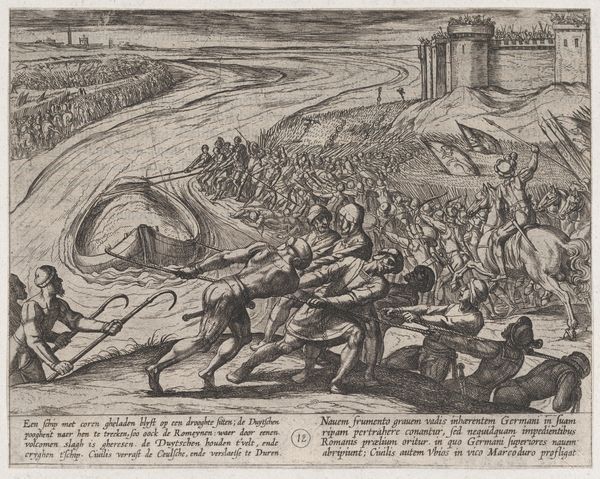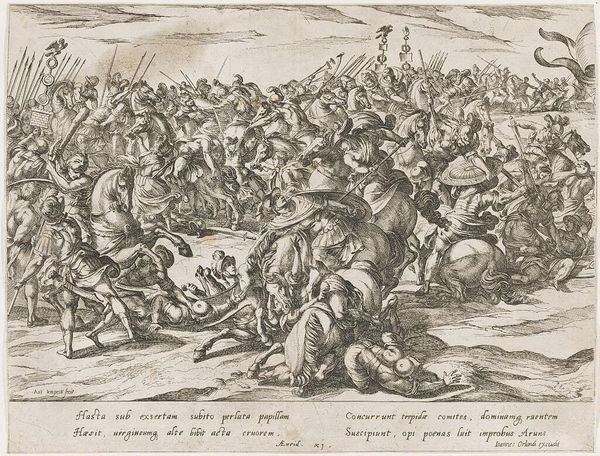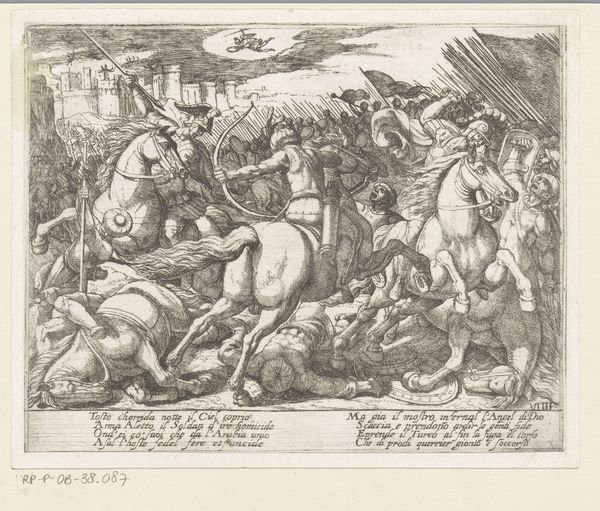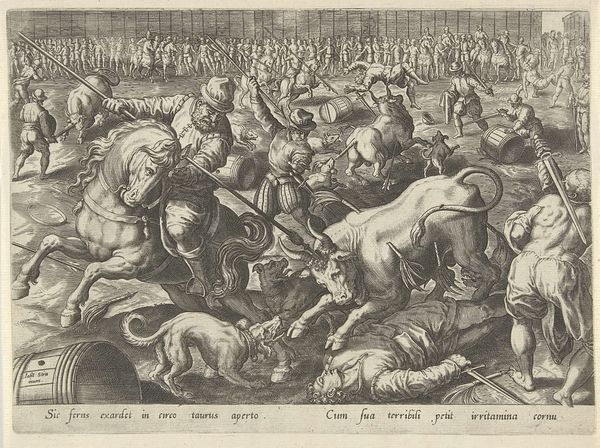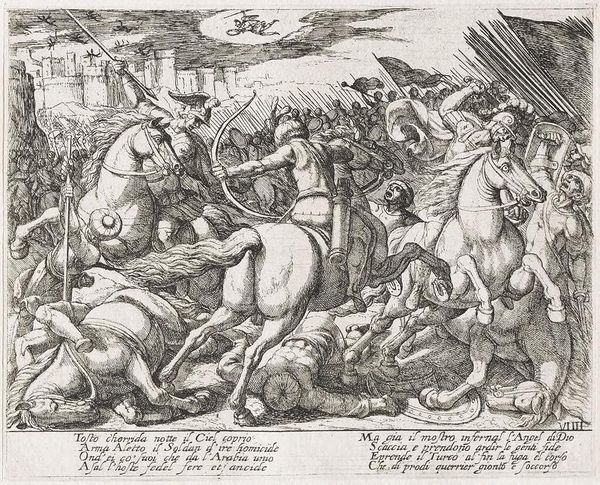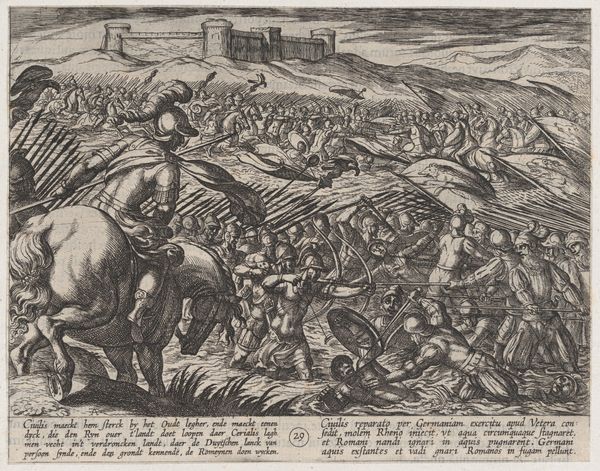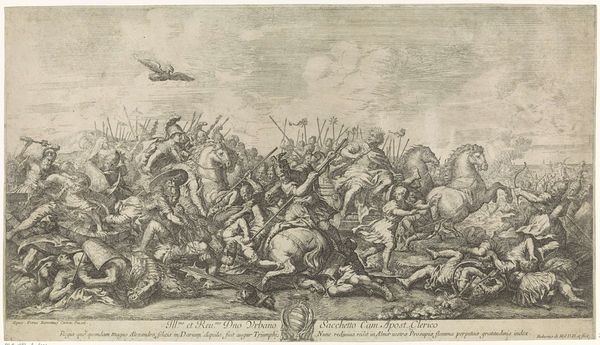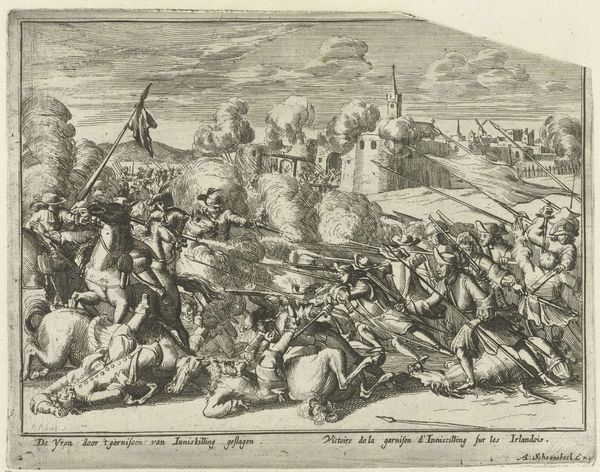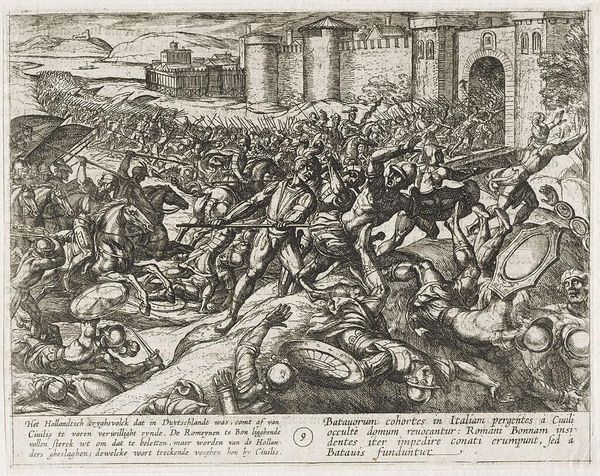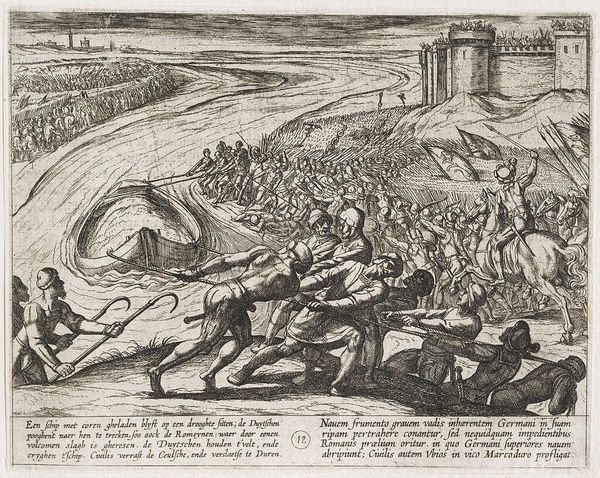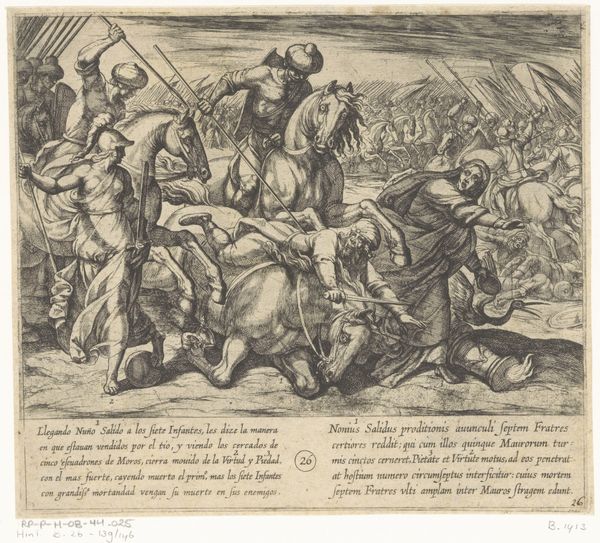
Plate 9: The Romans Defeated by the Dutch Troops at Bonna, from The War of the Romans Against the Batavians (Romanorvm et Batavorvm societas) 1611 - 1612
0:00
0:00
drawing, print, engraving
#
drawing
#
weapon
#
baroque
#
pen drawing
# print
#
war
#
soldier
#
horse
#
history-painting
#
engraving
Dimensions: Sheet: 6 3/8 × 8 3/16 in. (16.2 × 20.8 cm)
Copyright: Public Domain
Editor: Here we have "Plate 9: The Romans Defeated by the Dutch Troops at Bonna," from Antonio Tempesta's "The War of the Romans Against the Batavians," created around 1611. It's an engraving showing a chaotic battle scene. What historical context do you see embedded in this piece? Curator: It's essential to understand that Tempesta, though Italian, is depicting a historical event significant to Dutch identity, the Batavian revolt against Roman rule. It presents a fascinating lens through which to examine the early stirrings of Dutch nationalism and resistance against imperial power. Look at how the 'Dutch' troops, often visually distinguished, are actively overcoming the "Roman" colonizers. The print romanticizes themes of liberation. It's useful to reflect on the political implications of creating such imagery during the early 17th century. How might this scene speak to contemporary struggles for independence and autonomy? Editor: I see. So it's less about an objective record of history and more about...advocating for a particular worldview through historical narrative? Curator: Precisely. These prints weren’t just documentation; they were tools in shaping public perception. Think about the power dynamics: Who gets to tell the story? What details are emphasized or omitted, and how do these choices serve to legitimize certain political agendas? In this case, it highlights a narrative that fuels resistance against perceived oppression and is rooted in ideals of national pride and self-determination. What are your impressions of how this historical narrative might affect modern viewers? Editor: I see that the artist may have a preference in which sides is better and creates propaganda out of their art. I did not recognize this the first time. It’s interesting how a historical piece can be so relevant to discussions of colonialism, national identity, and artistic interpretation. Curator: Indeed, reflecting on these themes allows us to critically assess how the power of art shapes the collective memory of the revolt.
Comments
No comments
Be the first to comment and join the conversation on the ultimate creative platform.

